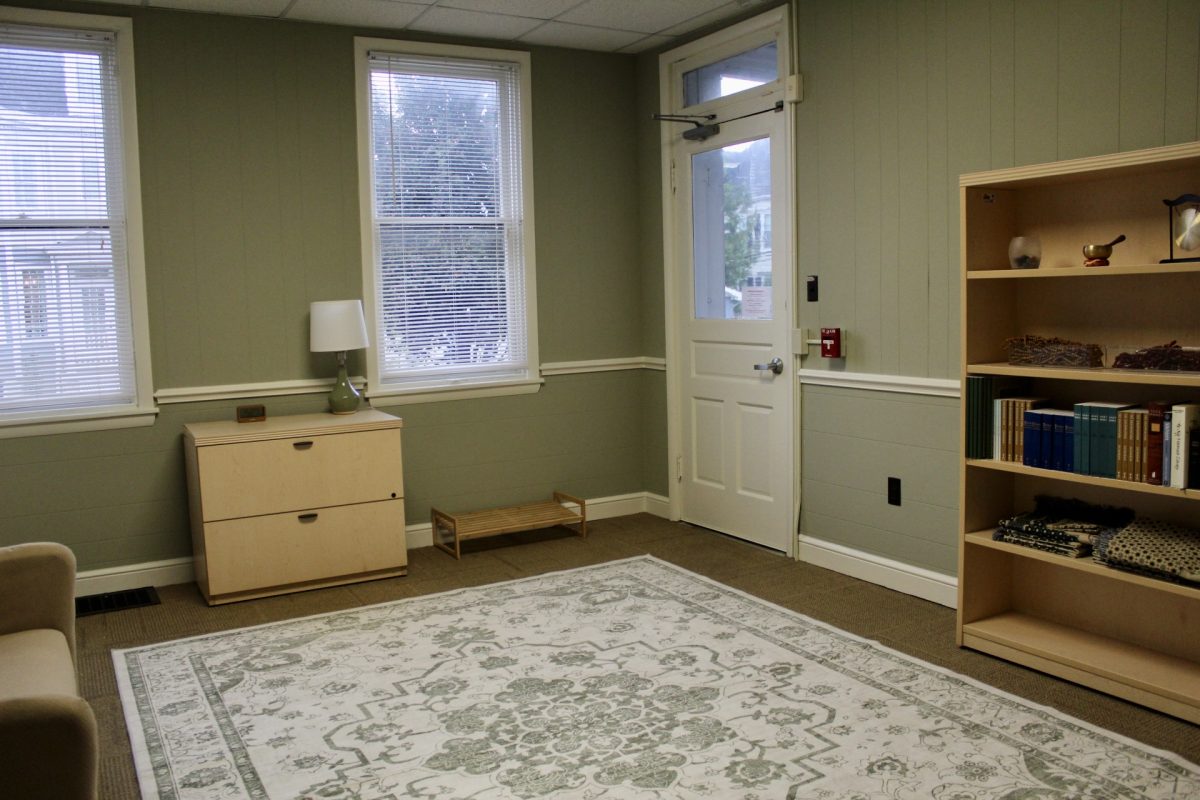At the beginning of 2023, The Washington Post published an article about the rise in homelessness in America, specifically highlighting Cumberland County as “a hidden problem” in America’s broader homelessness, housing, and health care crisis.
As the county seat, Carlisle’s nonprofit organizations including Community CARES and Safe Harbor serve the larger homeless population of Cumberland County.
“It’s almost a chicken and egg kind of thing. They [homeless people] come here for the services, but they were also [already] here,” explained Scott Shewell, President and CEO of Safe Harbour.
Between 2010 and 2020, Cumberland County’s population grew by 10.3%. It is the number one growing county when it comes to individuals moving to Pennsylvania.
“When you have a population that continues to grow like that, it puts pressure on the housing market,” said Shewell.
He explained that people who can afford the cost of housing in the county will get houses. Those who have a job and some money, but can not necessarily afford housing rates, will pay for market-rate rentals, which puts pressure on lower-incomes housing.
Safe Harbour provides housing and supportive services for homeless people. They have an emergency shelter, long-term temporary housing and affordable permanent housing.
The emergency shelter was designed for a 90-day stay. Unfortunately, realtors will not take U.S. Department of Housing and Urban Development (HUD) Section 8 vouchers–that allow people in Safe Harbor’s programs to get affordable housing–so the number of days in emergency shelters is increasing to above 90. These prolonged stays and refusal to accept housing vouchers are preventing Safe Harbor from continuing with its programs and helping more people.
“There is not a lot of affordable housing in Cumberland County,” said Shewell.
There are 227 households in the Coordinated Entry (a HUD-mandated program) database waiting for services; 94 are in shelters and 108 are unsheltered (living with friends or family, living in the streets, etc.).
Community CARES is a low-barrier shelter in Carlisle with two emergency shelters; one for adults and one for families.
The emergency shelter for adults houses 60 people. There is also a severe weather shelter that houses 50 people during the winter.
The family shelter, where each family gets their own room (depending on the number of people) and shares common areas, is located in Shippensburg and serves up to 15 families.
Katie Sternbergh is the Program Director responsible for bringing in resources and external affairs within the community. She is also developing an internship program with local colleges and universities.
Another service that Community CARES offers is street outreach for people who choose to not be housed in the emergency shelter. This is a time-limited service that goes into the community and offers resources and help for those in need.
“That safety net that folks had when they lost a job–expansions of medicaid, Supplemental Nutrition Assistance Program–they were starting to go away for a lot of folks who had a lul in employment or might have fallen behind on bills,” said Sternbergh.
She noticed that people were losing their Emergency Rental Assistance Program (ERAP), which was federally funded before the responsibility of the program was given to the states, leading to states phasing out ERAP completely post-pandemic.
“Even though there were resources that existed, there was a much bigger need than what we had seen in years passed, and it was continuing,” said Sternbergh.
“There’s kind of two parts. We’re the emergency shelter. That means we are the last resort, but even leading up to that point there’s preventative housing services that are not as abundant as they were [pre-pandemic],” Sternbergh continued, “Also, we’re the fastest growing county in the state…Landlords are now asking two, maybe three times the rent in security deposit before accepting an application, so if you already are having to manage your budget very strictly or have any kind of hardship that makes it not accessible for a lot of folks.”
Typically before becoming completely unhoused, people without a permanent residence will live in motels. This is no longer an option because motels are usually already full. Living in a motel is financially challenging too, because a paycheck usually equals a week-long stay, leaving no money left over for other necessities or savings, and the cycle repeats.
“There is a significant need for affordable housing, but if you don’t have affordable housing, that’s why you have people who are homeless,” says Shewell.
“The most shocking thing is it’s not people that are chronically homeless. Before it was folks who were chronically homeless or had bouts of this, and now it’s people who have never experienced this before in their life,” said Sternbergh, expressing her concern.
“The reason people are homeless; it’s a laundry list. Certainly economic issues, they may not be working, they may be underemployed, they may be on disability, they may only be on social security.” Shewell continued, saying, “Whatever it is, they don’t have enough income to allow them to rent a place and maintain a household.”
Both Shewell and Sternbergh acknowledged the prejudice that most homeless people are mentally ill. This does not deter them from their work.
“A lot of folks struggle with severe mental health, substance use, or both. Usually around 90% of chronically homeless have PTSD, because of the nature after the first year. You experience a lot of trauma,” said Sternbergh.
Shewell explains that it is difficult to get resources for homeless people with mental illness because there is a lack of psychiatrists.
Homelessness is a vicious cycle. There are many factors as to why someone may be homeless, and the government cut programs post-pandemic that aided nearly homeless people and are currently not cooperating with non-profits like Community CARES and Safe Harbor. On top of that, an expensive housing market and scarce mental health resources contribute to this cycle of homelessness.
Both Community CARES and Safe Harbor are always looking for volunteers.



